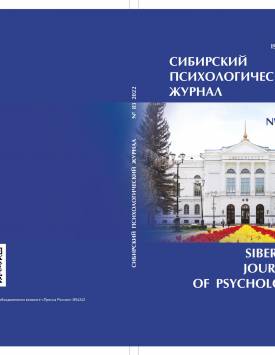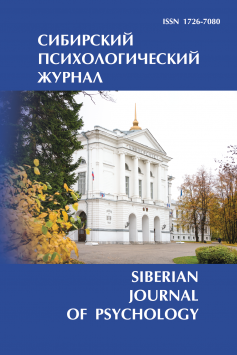Autism Scale Application for Identifying the Risk of Mental Development Disorders among Children Ages 3 And 4
In this study, we continued the development of diagnostic tools for the rapid identification (screening) of the risk of developing autism (ASD) in children ages 3 and 4. In 2020, we conducted a study on a sample population of 324 children ages 3 and 4, including 116 children with ASD. As a result, an Autism Scale was developed and standardized, consisting of 40 points (symptoms of autism) predicting the child's tendency to ASD within an accuracy of 86.73 - 89.9%. The scale forms into 4 factors (subscales) giving degrees in which children with ASD differ from children without ASD. The objectives of this study were: to test the validity and effectiveness of the developed Autism Scale on a wider sample; study of errors in diagnosing the risk of ASD and the possibility of improving the developed methodology; development of a full-fledged diagnostic technique suitable for practical use. The issues studied in this article cover such aspects of ASD as: the synchronism of the manifestation of ASD symptoms; homogeneity/heterogeneity of the sample for these symptoms; differences between ASD, DD and Normal, and what points allow you to identify these differences. The sample of this study included 178 children with ASD, 124 children with mental retardation, and 203 children with normal development, that is without a clinical diagnosis (Normal). Via an online survey, data was collected on the children with pre-diagnosed symptoms by using a specially designed questionnaire given to 32 specialists (psychologists, defectolo-gists) who worked with these children. The expanded sampling resulted in confirmation of validity, reliability and effectiveness of the developed autism scale, which includes 4 subscales: "Emotional disorders", "Sensory disorders", "Communication disorders" and "Disinhibition". The accuracy of the scale is 88.91% (sensitivity 92.1%, specificity 87.2%). Instructions, stimulus material and test norms for the practical application of the scale were created. Using a 2-stage cluster analysis, 4 groups (clusters) of children with ASD were identified, with significantly different symptom profiles. At the same time, one of these groups (26% of the ASD sample) in terms of symptom profile is the closest to the DD group, and it accounts for 90% of the errors when predicting the risk of ASD. For the remaining clusters, the prediction accuracy of ASD risk is 98.6%. It was found that the main source of errors in predicting the risk of ASD is that in 28.5% of cases children with DD are attributed with ASD symptoms. Our further prospective research is clarification of the typology of ASD symptoms.
Keywords
ASD, screening, markers of mental development, construction of scales, 3 and 4 year oldAuthors
| Name | Organization | |
| Nasledov Andrey D. | Saint Petersburg State University; Mykola Yarmachenko Institute of Special Pedagogy and Psychology of the National Academy of Pedagogical Sciences of Ukraine | a.nasledov@spbu.ru |
| Miroshnikov Sergey А. | LLC “Longitude” | sergeyamir@gmail.com |
| Zashchirinskaia Oksana V. | Saint Petersburg State University; Mykola Yarmachenko Institute of Special Pedagogy and Psychology of the National Academy of Pedagogical Sciences of Ukraine | zaoks@mail.ru |
| Tkacheva Lyubov' О. | Saint Petersburg State University; Mykola Yarmachenko Institute of Special Pedagogy and Psychology of the National Academy of Pedagogical Sciences of Ukraine | l.tkachewa@spbu.ru |
| Kompanets Natalia N. | Mykola Yarmachenko Institute of Special Pedagogy and Psychology of the National Academy of Pedagogical Sciences of Ukraine | det.psiholog@gmail.com |
References

Autism Scale Application for Identifying the Risk of Mental Development Disorders among Children Ages 3 And 4 | Sibirskiy Psikhologicheskiy Zhurnal – Siberian Journal of Psychology. 2022. № 83. DOI: 10.17223/17267080/83/9
